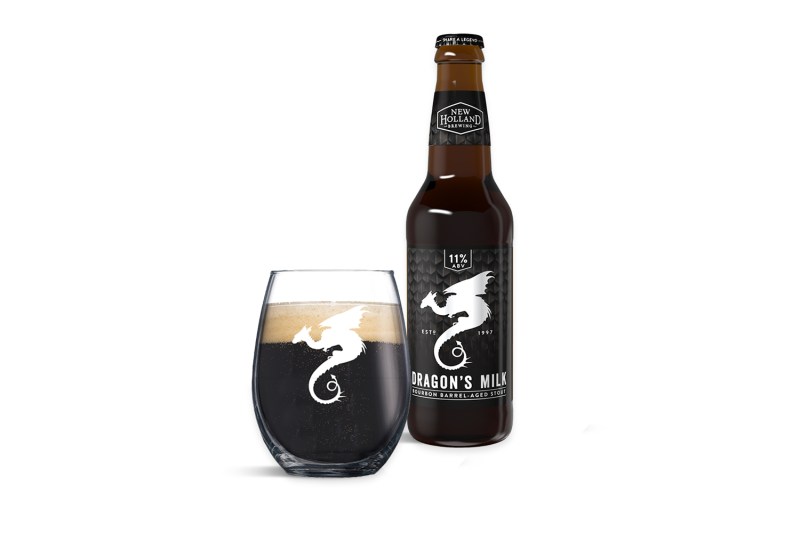The brewers at New Holland Brewing have good reason to be proud of Dragon’s Milk, the bourbon barrel-aged stout that is now the top-selling beer in its category. Such a significant accomplishment calls for a bit of fanfare, which is why New Holland just unveiled a refresh of the Dragon’s Milk branding (and a contest centered on telling your story). This celebrated stout has a new website, a new packaging scheme, and a renewed emphasis on the beer’s unique logomark. To further cement the beer’s place in New Holland’s pantheon, a new Dragon’s Milk Reserve variant, Banana Coconut, is on shelves now.

New Holland has been in the craft beer business for more than 20 years, and it’s not unusual for a trademark beer to emerge over the arc of a brewery’s long career. For Sierra Nevada, the signature brew is its Pale Ale. For Dogfish Head, that beer is 60 Minute IPA. For Oskar Blues, the lynchpin is Dale’s Pale Ale. While New Holland has offered many delicious beers to its customers, it’s hard to deny the impact of Dragon’s Milk. First offered in 2001, Dragon’s Milk was an easily accessible imperial stout when the style wasn’t a beer bar staple. As craft beer’s footprint grew, so did the audience for Dragon’s Milk. For many, this beer is synonymous with the bourbon barrel aged stout category.
A roasty, pitch black stout with a smooth, full mouthfeel, Dragon’s Milk features flavors of vanilla, whiskey, and chocolate. (The whiskey notes found in it help make it great for boilermakers, we must say.) The oak aging allows the intense base elements to mellow and blend into a rich sipper of a beer. The 11 percent alcohol by volume is obvious from the first taste, making no excuses for its heat. The carbonation rolls the beer throughout the drinking experience, moving one flavor ahead of the next, culminating with a sweet, lingering finish.
https://www.instagram.com/p/BoM0TjTlCFJ/
For a number of years, Dragon’s Milk has also been offered as a “Reserve” series. These Reserve beers feature a base brew that has been augmented with additional spices, fruits, or other additives. Following favorite combinations like Vanilla Chai, Coffee and Chocolate and S’mores, this fall sees the premiere of Banana Coconut.
Banana Coconut Dragon’s Milk melds the flavors imparted from real banana, plantain, and coconut. Those additions, along with the expected chocolate, are evident from the beer’s aroma and lead straight into a similar tasting experience. The beer is thick and creamy with a candy-like sweetness. The coconut is on the mild side, adding just enough flavor to spark the banana and barrel elements.
Dragon’s Milk is available in its new packaging now throughout New Holland’s distribution area. Banana Coconut is also on shelves now in large format bottles, making it perfect for sharing.


